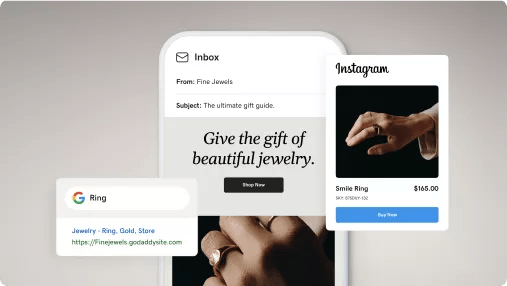Enhance User Experience and Drive Web Traffic With Responsive Internet Design
In today's electronic landscape, where customers are accessing internet sites from a multitude of gadgets, responsive internet design has become more vital than ever before. With its capacity to adjust and perfectly change to different screen sizes, responsive layout not only enhances user experience but also drives traffic to your site. Why is this style method so important? Exactly how does it enhance customer involvement and boost web site traffic? In this discussion, we will certainly explore the crucial elements of reliable responsive design, explore the most effective practices for its implementation, and reveal the keys to improving customer experience while driving even more web traffic to your site.
Why Receptive Web Layout Matters
Responsive web layout is a necessary aspect of modern-day web growth as a result of its capability to ensure optimum user experience throughout various gadgets and screen dimensions. With the proliferation of mobile phones, tablets, and other smart phones, it has come to be important for websites to adapt and give seamless functionality no matter the device being utilized.
The key reason why responsive internet layout matters is that it enables customers to have a enjoyable and constant browsing experience, no matter the tool they are using. A receptive internet site automatically changes its content, design, and design aspects to fit the display dimension and resolution of the tool, ensuring that users can quickly connect and browse with the website with no hassle or stress.
In addition, receptive web design also plays a significant role in search engine optimization (SEO) Look engines, such as Google, focus on internet sites that are mobile-friendly and responsive in their search results page. By including receptive style principles, sites can improve their visibility and ranking, leading to increased natural website traffic and possible clients.

Boosting Customer Engagement With Responsive Layout
Optimizing individual involvement is a key goal of responsive style, as it makes certain that users can quickly accessibility and connect with website material on any type of tool. With the increasing use tablet computers and smart devices, it is crucial for sites to adapt to different screen sizes and resolutions. Receptive style makes it possible for internet sites to instantly adjust their layout and content to offer a seamless user experience across devices.
One of the main ways responsive design increases user engagement is by decreasing load times. With a responsive website, users don't need to await different mobile variations to tons, leading to faster access to content. This better speed leads to higher user satisfaction and urges them to spend even more time on the site.
Furthermore, responsive design boosts customer interaction by improving navigation and interface (digital marketing Carlsbad). When a site is developed responsively, switches and menus are maximized for touch interactions, making it much easier for individuals to interact and browse with the website on their smart phones. This easy to use and user-friendly experience maintains customers involved and urges them to check out even more of the site
Additionally, receptive style permits better web content visibility and readability. By adapting the layout and font sizes to various tools, responsive websites ensure that users can quickly comprehend the material and check out. This enhances user involvement by reducing the requirement for scrolling or zooming to read the text.
Increasing Site Traffic With Responsive Website Design
With the expanding popularity of smart phones, having a web site that is receptive to different display sizes and resolutions is essential for driving increased web traffic. In today's electronic landscape, users are accessing web sites from a variety of devices such as smart devices, tablets, and computer. Each of these devices has different screen dimensions and resolutions, and if your internet site is not created to adapt to these variants, it can cause a poor customer experience and a loss of prospective website traffic.
Responsive website design makes certain that your internet site looks and operates optimally throughout all tools. By utilizing flexible grids, liquid photos, and media queries, receptive layout allows your internet site to immediately change its navigating, material, and layout to fit any type of display dimension. This means that individuals will certainly have a smooth surfing experience no matter whether they are using a large desktop or a tiny mobile phone computer.
Secret Aspects of Efficient Receptive Style
Effective receptive layout integrates a number of essential components that make sure a smooth individual experience across different gadgets. One of these elements is adaptable grids and layouts. By using family member systems like percents as opposed to dealt with devices like pixels, developers can create layouts that adapt and scale to fit various screen sizes. This allows web content to be displayed in a aesthetically enticing and readable way on any kind of tool.
Another important element is media queries. These allow developers to apply different designs and designs based upon the attributes of the user's device, such as display size and orientation. By utilizing media queries, developers can optimize the discussion of content for every gadget, making sure that it is conveniently obtainable and readable.
Responsive photos are likewise important in reliable receptive design. Images that are also large can reduce page see this site lots times on mobile phones, while photos that are also little may show up pixelated on larger screens. By utilizing strategies such as responsive picture resizing and lazy loading, designers can ensure that images are appropriately sized and optimized for every device.
Lastly, reliable responsive design entails a mobile-first technique. This implies focusing on and designing material for mobile devices initially, and afterwards expanding and boosting the style for bigger screens. This technique ensures that the most essential web content is conveniently accessible on smaller sized displays, while still supplying an abundant experience on larger devices.
Best Practices for Implementing Responsive Website Design
Implementing responsive internet design needs careful factor to consider of numerous ideal techniques to ensure an optimal individual experience across different devices. Right here are some vital best methods to follow when carrying out receptive internet design.
To start with, it is essential to prioritize mobile individuals. With the boosting prominence of mobile phones, designing for mobile-first has actually become vital. Beginning by making for smaller sized screens and after that progressively improve the format for bigger Resources screens.

Another vital ideal technique is to maximize photos for various screen resolutions. Huge images can decrease the loading time of your internet site, specifically on smart phones with slower links. Use responsive pictures that can be resized based upon the tool's screen resolution to improve performance.
Furthermore, test your site on various gadgets and display dimensions to guarantee a consistent and seamless experience. There are numerous screening devices available that can look at this site help you recognize any kind of concerns and make essential changes.
Last but not least, prioritize usability and access. Ensure that your website is simple to browse, with concise and clear content. Make sure that your site is available to people with handicaps and follows ease of access guidelines.
Verdict
In final thought, receptive web style plays a crucial role in improving user experience and driving web traffic to web sites. By adopting receptive style principles, web sites can guarantee ideal watching experiences across different devices, leading to raised user engagement.
Optimizing user involvement is an essential objective of responsive design, as it makes certain that customers can easily gain access to and communicate with internet site content on any tool. Responsive style enables sites to immediately adjust their design and material to supply a smooth customer experience across tools.
Additionally, responsive style enhances user engagement by enhancing navigating and customer interface.Responsive images are likewise essential in effective receptive layout. By taking on receptive layout concepts, web sites can make sure optimal seeing experiences across different gadgets, leading to boosted customer interaction.